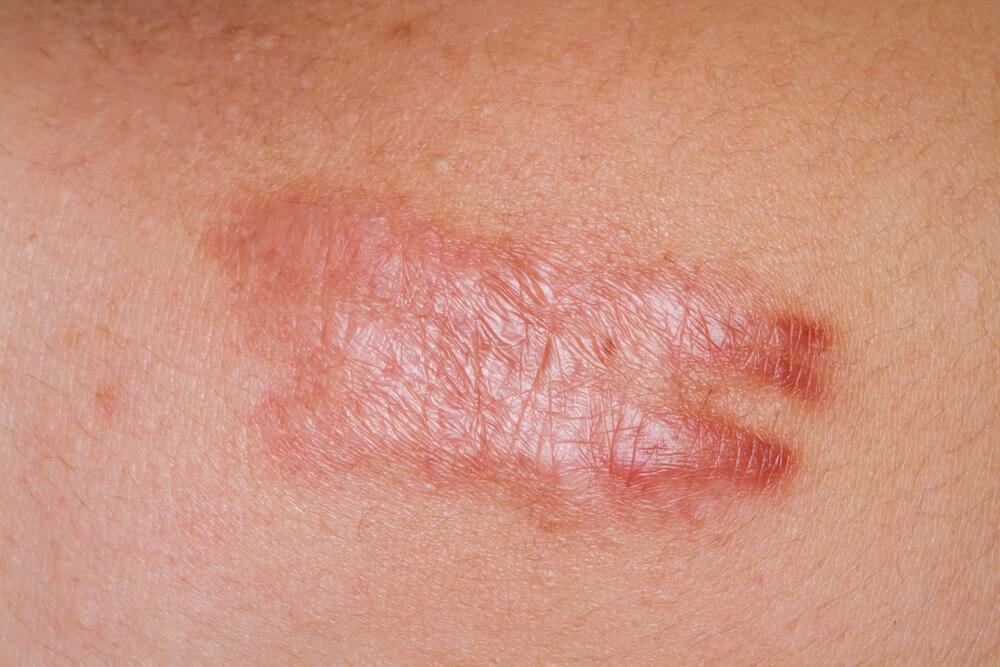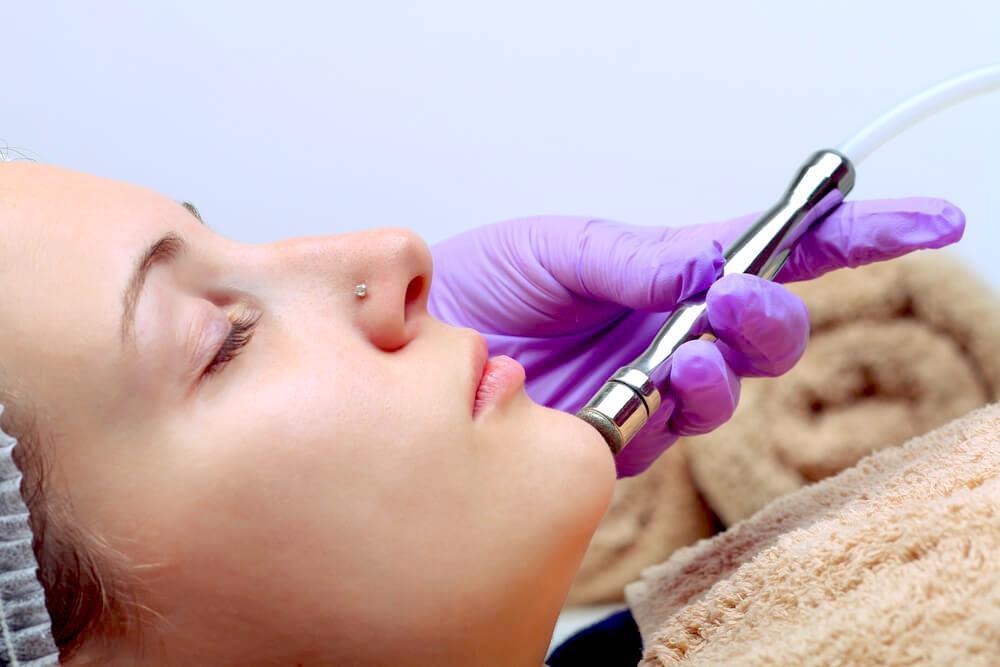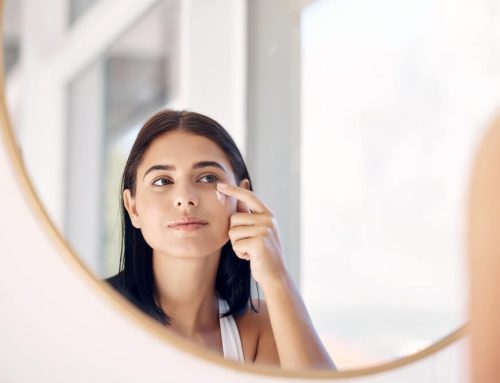Scars. Like us, they come in all colors, shapes, and sizes. Some of them are put there on purpose, some of them happen quite by accident. There are scars we are proud of, scars we are ashamed of, scars we once liked, and now are thinking twice about, and scars that we once hated and have grown to love.
While our opinions on our scars seem to differ greatly, the facts are more or less incontrovertible, and probably more important. The reassuring thing to know when it comes to scars is that we do have some degree of control over whether they stay or go, and they are not necessarily a life sentence, however, love em or leave em, it is a good idea to have a comprehensive understanding of what exactly scars are, and the treatment options.
What Are Scars?
The first thing you should be aware of when it comes to scars, is that they are not necessarily a bad thing, in fact, they are signs that skin is heating normally. A scar appears as a result of the biological process of wound repair in the tissues and skin, and most wounds will cause some degree of scarring. Scars can result from acne, disease, skin conditions, surgeries, or accidents.
How Do Scars Form?
When the dermis (a thick layer of skin underneath the epidermis) is damaged, the new fibers of collagen that the body produces to mend them will have a different texture than the surrounding tissue, and that forms scar tissue. The scar will form after the wound is healed completely.
Types of Scars and Recommended Treatments
Different types of scars form differently, and the way they are dispensed with differs in accordance. Here are the six main types of scars, and the best ways to dispense with them.
Atrophic Scars
Atrophic scars appear as depressed, flat, or serrated against the outer layer of skin. Although atrophic scars may be confused with hyperpigmentation, a condition in which areas of skin develop darker pigmentation than other areas, hyperpigmentation can fade with the passage of time, and proper medication, whereas atrophic scars result from tissue damage, and may need more intense treatment.
Hypertrophic Scars
These scars are raised in appearance and result from the overproduction of collagen fibers in the skin. They are similar in appearance to keloid scars, but unlike keloids, form only as a result of injury. These are best treated with steroids and silicone sheets.
Keloid Scars
These happen when the healing phase is particularly nasty. Keloid scars are characterized by a thick, clustered appearance which is darker in color than the skin surrounding it. They are caused by injuries, and are particularly likely to form when the body secretes an excess of collagen in the wounded area, even though the wound has healed.
In other words, keloids happen when the body overcompensates, and goes beyond what is necessary to repair the damage. They can restrict the movement in the affected area, and often occur on young, or darker-skinned people.
Keloids are easily treatable through surgery or with the application of steroid injections and silicone sheets. Minor keloids can be treated with liquid nitrogen for accelerated fading.
Scar Contractures
Scar contractures result from burns, and are most often present on creases and joints. They tighten the skin and can affect flexibility and movement, and if they are deep enough, may also disrupt nerve and muscle function.
Stretch Marks
Ah, these are the beauties we are all too familiar with and the bane of many women’s existence. These are usually the result of the extreme and rapid stretching of skin due to pregnancy and obesity, which causes the skin to tear.
Stretch marks most often occur in the thigh and breast area, or on the buttocks. They may appear purple or red in color, but generally lighten to silver over time.
Acne Scars
Who of us has survived acne without some form of scarring? As the name suggests, acne scars occur in the wake of severe acne, and can differ in depth and type. The treatment of the scars will depend on the type you have.
Common types of acne scars include rolling scars, boxcar scars, ice pick scars, and hypertrophic scars.
1. Ice Pick Scars
Although these might sound like the result of a mafia related injury, icepick scars are actually large and open and make deep narrow marks that penetrate the skin’s outer layer and actually form when acne infections reach the surface of the skin, destroying tissue. Ice pick scars are generally found in the places where acne tends to occur. They are atrophic, or depressed, can be hard or soft, and are often the result of picking white or blackheads.
2. Boxcar Scars
Another graphically named scar, boxcar scars are atrophic, like ice pick scars, but tend to be wider.
Also, like ice pick scars, they often occur after an acne breakout destroys the skin’s collagen, causing a pitted appearance.
3. Rolling Scars
The name may sound somewhat romantic, and indeed these scars do get their name from their wave-like appearance. Rolling scars form wide shallow rows on the skin and are caused when the subcutaneous tissue of skin forms fibrous brands as a result of a skin infection. Because of this, the skin’s surface forms grooves which appear to be ‘rolling’ over the skin.
Scar Treatment
Now that you’ve successfully identified your scar, it’s on to the dermatologist’s office to find appropriate treatment. Here are your choices:
Topical Treatments
Topical treatments are one of the less invasive types of scar treatment, and include lotions, gels, and creams formulated to specifically lessen or eliminate scars. Generally, individuals who are not concerned with allergies can safely use over the counter topical scar treatments. However, those with more sensitive skin are advised to seek a prescription treatment to avoid side effects.
Vitamin C
Vitamin C is a known skin-brightening ingredient, and may be effective for decreasing the dark pigment that occurs from scarring. Vitamin C serums are widely available for use in fading scars. If you are a fan of natural healing, lemon juice may be an effective treatment for your skin. You can make your own therapeutic lotion by mixing equal parts lemon juice, glycerin, and rosewater and applying it to your skin nightly before bedtime. Store in the refrigerator.
While Vitamin E has enjoyed its time in the spotlight as “the skin healing vitamin,” it has now come under fire by dermatologists who find that 30 % of those using vitamin E for scar treatment contracted contact dermatitis.
Skin Grafting
Skin grafting is an up-and-coming surgical procedure that involves the surgeon taking parts of the skin from other parts of the body and transferring it to the scarred, damaged area. This procedure is most commonly used to treat burns. While it is a common treatment for eliminating scars, skin grafting, along with chemicals peels, is usually a costly and lengthy process that may lead to surgery scars, which generally take a long time to fade.
Acne Scar Treatment
Dermabrasion
Dermabrasion is a procedure which entails the removal of skin’s outermost layer, and may be as painful as it sounds. It requires using a high-speed brush to slough off the outermost layer of the epidermis, and heavy anesthesia.
However, despite the prohibitive details, dermabrasion can be very effective in targeting shallow scars elevated about the surrounding skin, but it is not recommended for sunken scars.
Lasers
Quite a bit less painful than their dermabrasionesque counterparts, carbon dioxide lasers are most known for their ability to smooth scars and lighten discoloration. They are also effective for treating aging skin, wrinkles, and sun damage. Although the results of laser therapy are immediate, the procedure can cause side effects, including minor burns, redness, and exaggerated acne appearance that could last for a few weeks.
Punch Technique
Although this sounds more likely to cause a scar than eliminate it, the punch technique is often used by doctors to treat scarring from severe acne, such as boxcar and icepick scars. In this technique, a doctor employs a punch tool to remove scars from the skin. However, as its name suggests, the treatment itself causes its own small scars, which may then be treated by other scar removal procedures, such as microdermabrasion, or laser therapy.
Drugs
If your treatment doesn’t respond to surgery or cosmetic procedures, drugs are a noninvasive option. These may include dermatologist prescribed retinoid creams and steroid drugs.
Make-up for Scars
Of course, if long-term treatment is not an option, there are daily hacks for hiding even the most hideous of scars, cheaply and effectively. Here’s some step by step tips for camouflage that will hide your scars just as well as photoshop.
Prepping the Skin
The first thing you want to do before beginning any makeup routine is to make sure the base is clean. That means skin should be cleansed, exfoliated, toned, and moisturized. Feel free to use any type of products that suit your skin type and are currently part of your daily routine.
Foundation
When applying scar makeup, you want to start by covering redness and discoloration, most commonly associated with acne scars. You can do this by applying a foundation that suits your skin tone. Although foundation will even tone, it won’t smooth the texture of skin, so if you’re looking to cover bumps, you may want to use a primer. Silicone-based primers will work the best, but make sure to use only the small amount needed to fill the scars. Primers will also make a good makeup base.
Layering
If your foundation and primer are not giving you enough coverage, you may want to invest in a scar concealer. Be sure to pick one with a shade close to that of your natural skin, and layer as necessary. However, be aware that too much concealer can make skin patchy and cause makeup to appear caked on. Apply concealer sparingly, and use fingertips to blend.
Color Correction
Color correction usually comes before applying the scar concealer, and is helpful for correcting pigmented scars. Color correctors react with the color of the scar, so you may want to choose a tint most suited to neutralizing the color of your particular scar. Color correction will also help to even skin tone.
Follow Up
While using makeup products every day will help to conceal scars, it may be a good idea to use a scar cream in addition to lessen the impact of the scar on the skin, and lalso eventually allow you to reduce the amount of makeup required to conceal the scar.
Mederma is an effective scar cream for lightening scars, which will take effect over a few applications.
Home Remedies
While there are cosmetic products on the market which can be effective on scars, those with ultra-sensitive skin, or naturalists, may prefer less toxic options. Here are some scar treatments that you can find in your own kitchen.
Lemons
When life gives you scars, put lemon on them. Lemon has natural bleaching properties to fade scars and citric acid to exfoliate. It also kills bacteria and prevents scars from forming and worsening. You can apply lemon juice directly to scars or drink lemon juice to help clear skin from the inside out.
Aloe Vera
Best known for its soothing, cooling properties, aloe vera soothes the skin and strengthens collagen to speed scar repair. You can apply the gel from the leaves of the aloe plant to scars to lighten them, with the extra benefit of nourishing and moisturizing your skin.
Potatoes
Mash them, fry them, bake them, or rub slices of them on your scars. The juices in potatoes have potassium, phosphorous, sulfur and chlorine which penetrate skin and work wonders for fading scars.
Potato extracts are best for acne scars, and you can even bandage a piece of raw potato to the affected area, after rubbing the juices from it over the spot. Leave it like that for an hour, and you’re sure to see results.
Olive Oil
With revelations abounding about the wide range of the cosmetic and health benefits of olive oil, it is little wonder it can also help to lessen the appearance of scars. Apply topically, ingest it, or inhale it, as a steam added to water. It’s the anti-inflammatories in olive oil that helps break down scar tissue and help to clear your skin.
Yogurt
Known for its ability to kill bacteria and keep skin supple, yogurt is also an excellent skin healer. It contains alpha hydroxy acids that nourish and treat damaged skin, and can be incorporated into any skin care regimen to keep scars from appearing.











Leave A Comment